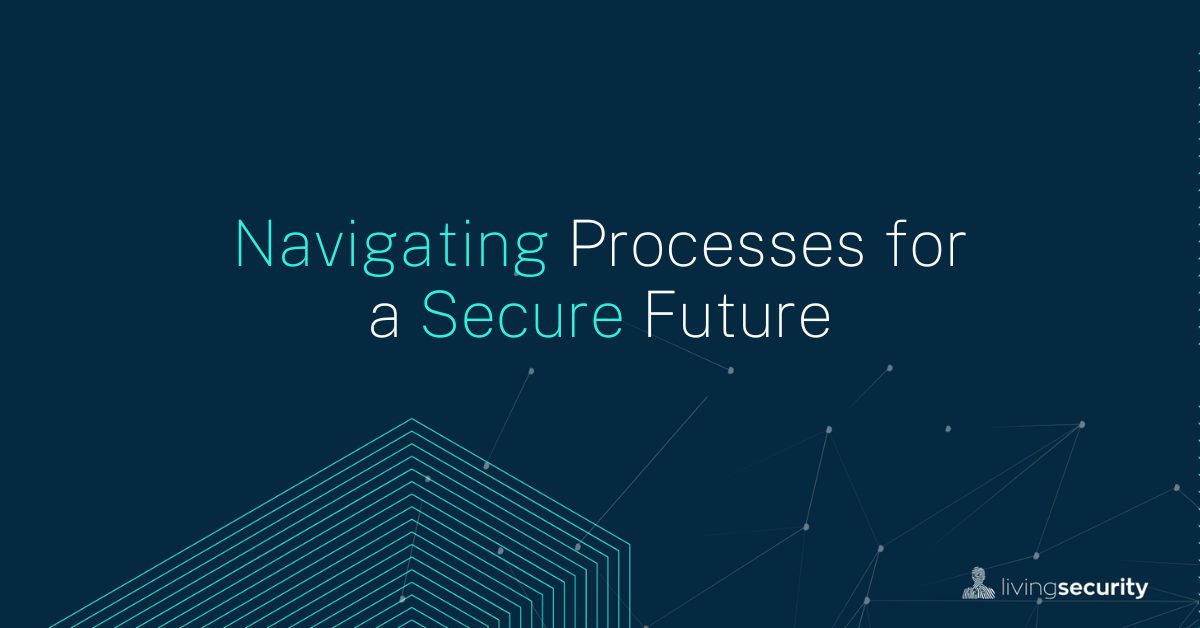

Blogs 
February 20, 2024
Living Security Team
Navigating Processes for a Secure Future

Cybersecurity risks encompass not only rogue codes but also human vulnerabilities, emphasizing the importance of employee risk management in contemporary settings. With that in mind, the Human Risk Management (HRM) Maturity Model has emerged as a lighthouse guiding organizations to safer shores.
The three primary elements of the HRM Maturity Model are Culture, Technology, and Process. We have covered Culture and Technology in previous posts, but Process is often the most elusive of the three. It’s easy to understand that Technology is the foundation, and because the focus is on Human Risk, it’s easy to connect the dots with Culture. Process, however, is crucial. It is the chain that connects the two.
Let's explore the dynamics of process within the HRM Maturity Model, focusing on its core components: Functional Structure, Program, and Metrics.
Functional Structure: The Spine of the Operation
Initial Stage: The Nomadic Phase
In the initial stage, Human Risk Management (HRM) is a vagabond, settling temporarily in departments like Compliance, IT, or HR. This stage often resembles an unorganized marketplace, where everyone is aware of the need for security but isn't quite sure who should be the vendor.
Managed Stage: Founding the Citadel
Here a full-time team dedicated to HRM is formed, typically reporting to IT or Security. Think of it as moving from tents to a fortified citadel where there's more organization and better-defined roles.
Defined Stage: The Interconnected City
In this stage, the citadel expands into a city, with roads connecting to other critical departments like IT, risk management, and even high-level executives. The CISO is the mayor, whose support provides the city (the HRM program) the budget and multi-disciplinary strength it requires.
Optimized Stage: The Metropolis
At this stage, the city grows into a bustling metropolis complete with skyscrapers representing different metrics and tools that guide the HRM initiatives. The budget expands, new specialized roles emerge, and senior leaders are brought in to drive the strategy.
Innovating Stage: The Smart City
The budget and initiatives at this stage are futuristic and data-driven. The CISO is no longer just a mayor but also an evangelist, making the value of the HRM program clear across the entire organization.
Program: From A One-Man Band to a Symphony
The anecdotal evolution from nomadic wanderers to advanced smart cities aside, the Process component of HRM also matures over time to include a wider range of roles and individuals.
When an organization first starts its HRM journey, training programs tend to be one-size-fits-all, meeting the bare minimum of compliance requirements.
As the program matures, training becomes job-specific, and elements like performance scores in training modules are introduced. Eventually, access to behavioral data is introduced, enabling targeted interventions based on individual risk profiles. As the HRM process grows, technology allows for proactive, targeted interventions based on comprehensive data analysis.
The pinnacle is when the program becomes predictive, using sophisticated data models to preemptively identify risks.
Metrics: From Checkmarks to Dashboards
Initial to Defined Stages: The Scorecard
Metrics in the initial stages are like a basic scorecard, simple and focused on tick-boxes such as course completions and engagement rates.
Optimized and Innovating Stages: The Dashboard
As the program matures, the metrics evolve into a comprehensive dashboard that measures various facets of employee risk. Metrics are now not just about what is, but also about what could be, offering predictive insights into future risks.
Ensure the Chain Is Strong
As organizations mature in their approach to Human Risk Management, they transition from being a small, scattered village to a planned, sprawling metropolis. They move from lone individuals to an intricate collaboration. And they evolve from using a rudimentary scorecard to a sophisticated, predictive dashboard.
The goal is to reach a stage where human risk is not just managed but optimized, contributing to both the security and the performance of the organization. This journey, marked by sophisticated employee risk management strategies, is complex. Yet, the Human Risk Management Maturity Model serves as a vital roadmap, guiding organizations through the multifaceted landscape of managing and optimizing employee risks.
It is not just about meeting compliance requirements or ticking boxes; it's about creating a culture where security is integrated into the very fabric of the organization.